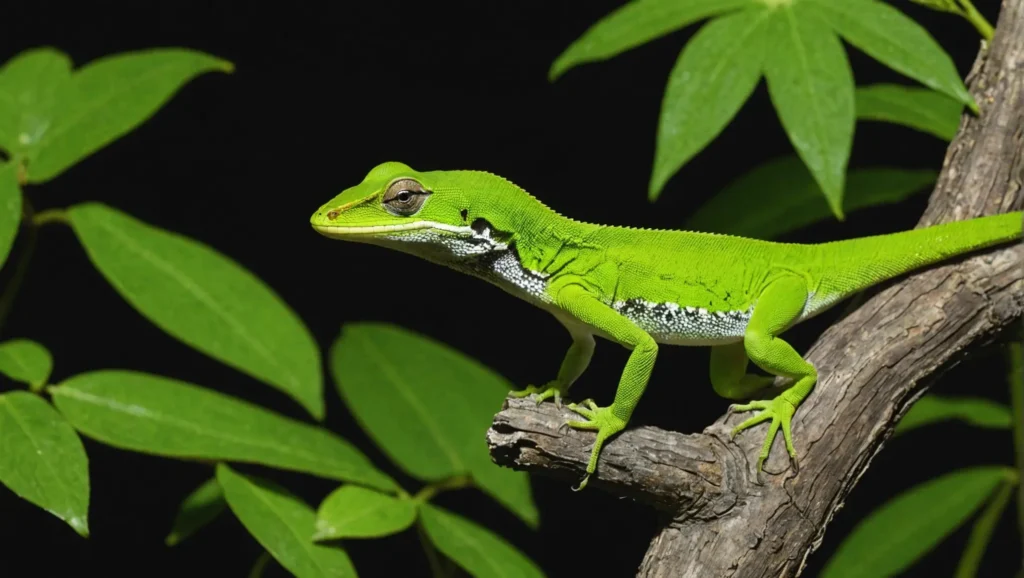Anole lizards are among the most captivating reptiles you can have as pets. Known for their vibrant colors and relatively easy care, they make an excellent choice for beginners or seasoned reptile enthusiasts alike. Whether you’re fascinated by their unique ability to change colors or curious about their active behavior, Anoles provide both beauty and entertainment. In this guide, we’ll explore everything you need to know about caring for Anole lizards, including their habitat, diet, and behavior.
What Is an Anole Lizard?
Overview of the Anole Species
The Anole lizard family is quite diverse, with over 400 species. However, the most popular pet species is the Green Anole (Anolis carolinensis), which is native to the southeastern United States. Other species, like the Brown Anole (Anolis sagrei), are also common in the pet trade, though they’re known for being more aggressive. These small reptiles are famous for their adaptability, thriving both in the wild and in captivity. The Green Anole, in particular, is recognized for its ability to change color, from bright green to brown, depending on its environment and mood.
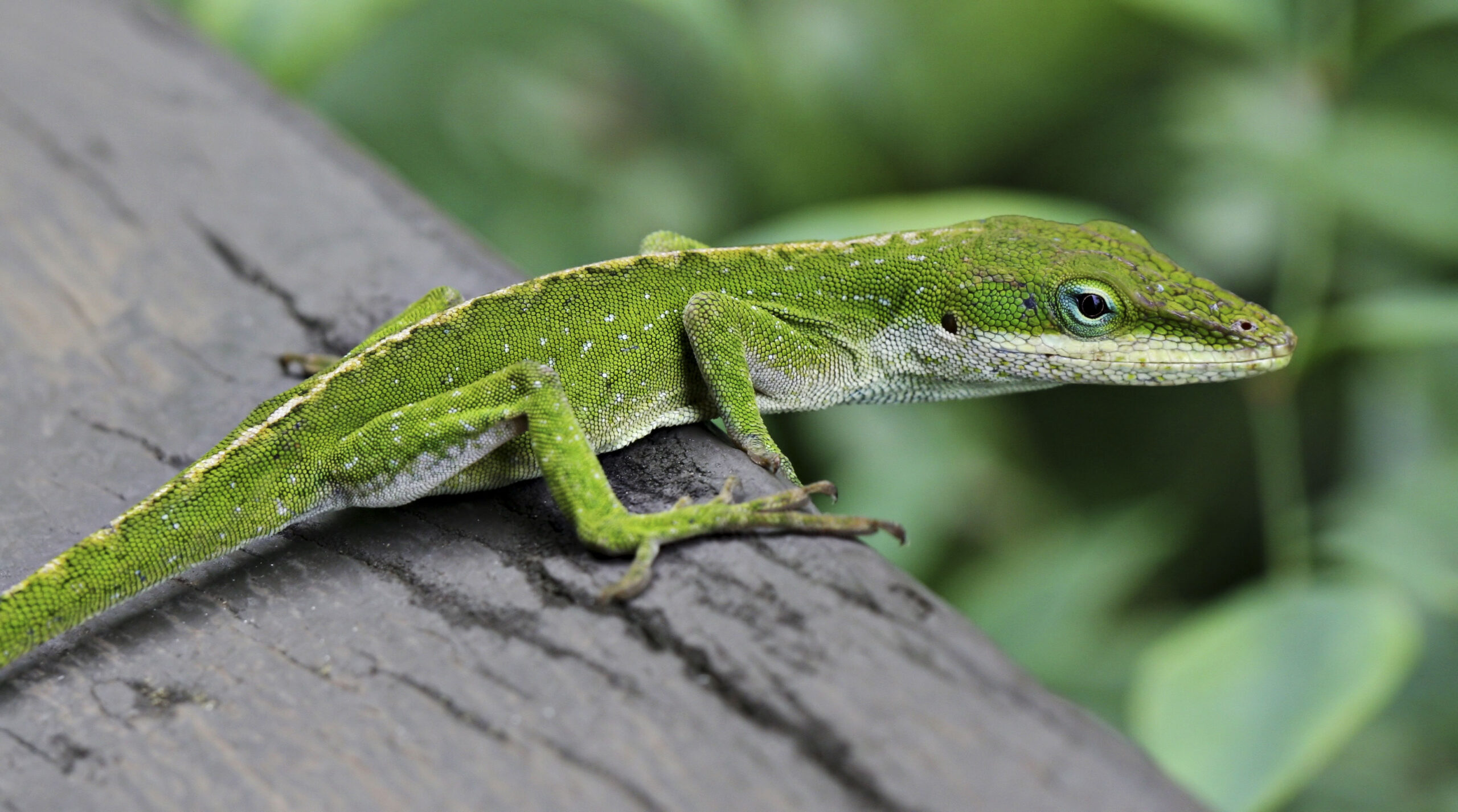
Anole Lizard Natural Habitat
In the wild, Anole lizards are most often found in warm, humid environments like forests, shrubs, and tropical areas. They’re particularly fond of high perches, where they can bask in the sunlight. As tree-dwellers, they have strong, adhesive toe pads that allow them to climb vertical surfaces with ease. For pet owners, replicating this natural environment as closely as possible in captivity is essential to keeping them happy and healthy.
Setting Up a Perfect Habitat for Your Anole Lizard
Ideal Terrarium Size and Setup
When it comes to housing an Anole lizard, tank size and setup are critical. Anoles are active lizards that love to climb, so you’ll want to provide a vertical terrarium with ample climbing space. A 20-gallon vertical terrarium is recommended for one or two Anoles. Inside the terrarium, include plenty of live or artificial plants, vines, and branches to simulate a natural forest canopy. Not only does this create an enriching environment, but it also gives your Anole plenty of places to hide and explore.
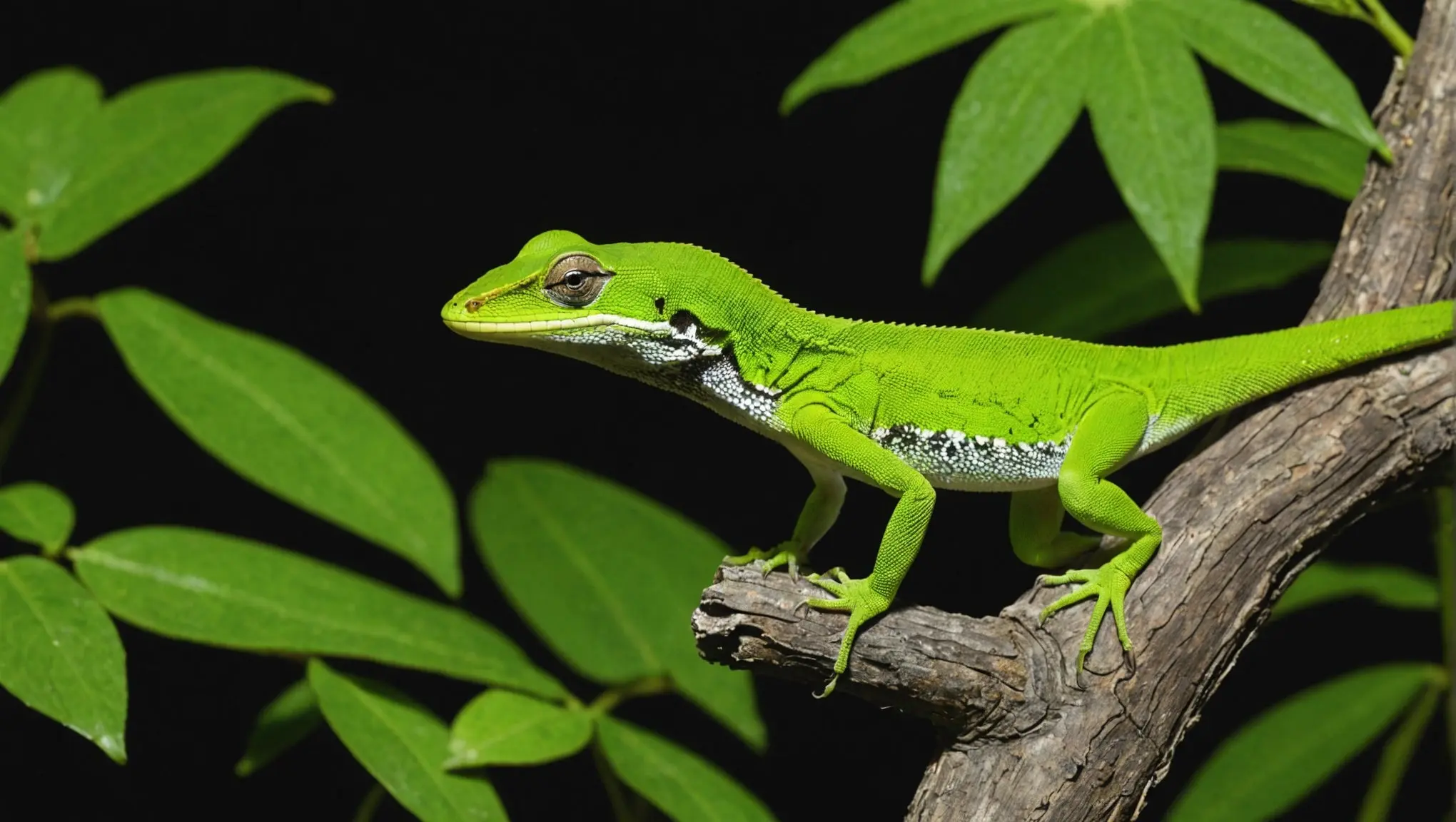
Temperature and Humidity Control
Anoles thrive in warm, humid environments, so maintaining proper temperature and humidity levels is crucial. The ideal temperature range for Anoles is between 75°F to 80°F, with a basking spot around 85°F to 90°F. At night, temperatures can drop slightly, but they should remain above 65°F. For humidity, aim for levels between 60% and 70%. A combination of regular misting and a humidifier can help you maintain these conditions. Additionally, a hygrometer can help monitor the humidity levels inside the tank.
Lighting for Your Anole
Proper lighting is a non-negotiable aspect of Anole care. Like many reptiles, Anoles need exposure to UVB light to synthesize Vitamin D3, which is essential for calcium absorption and bone health. A 10.0 UVB bulb should be on for 10 to 12 hours a day. Providing UVB light ensures that your Anole lizard remains healthy and avoids common health issues like metabolic bone disease.
Feeding Your Anole Lizard
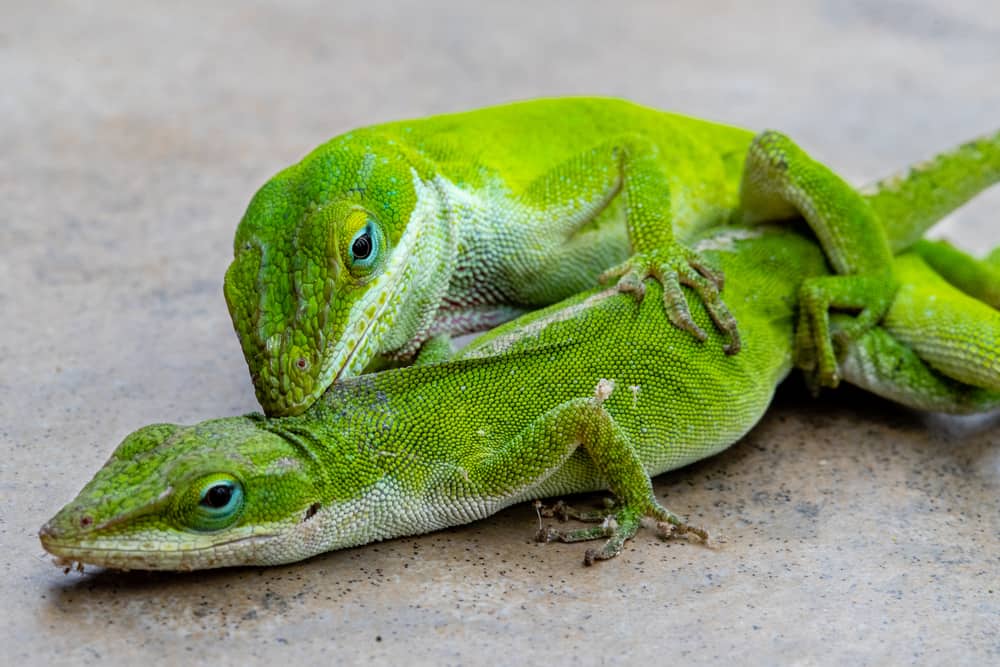
Anole’s Natural Diet
In the wild, Anole lizards are insectivores, meaning they feed primarily on insects like crickets, flies, and small moths. They are opportunistic hunters, often waiting for prey to wander by before making a swift grab with their sharp reflexes. Because of their small size, Anoles need food sources that they can easily swallow and digest.
Feeding in Captivity
When feeding an Anole in captivity, it’s important to replicate their natural diet as closely as possible. Their staple diet should consist of crickets, supplemented with other insects like mealworms, waxworms, or even small grasshoppers. Dusting the insects with a calcium supplement is critical to prevent health issues. Feed adult Anoles every other day, providing about 2-3 insects per feeding. Juveniles, however, may need daily feeding due to their higher growth demands. Always ensure that the insects you offer are smaller than the width of the Anole’s head to avoid choking.
Anole Lizard Behavior and Care
Why Do Anole Lizards Change Color?
One of the most intriguing aspects of the Green Anole is its ability to change color. While many believe that the color change is for camouflage, it’s more closely related to temperature, stress, and social interaction. Green Anoles turn brown when they’re cold, stressed, or feeling threatened. In contrast, a bright green hue typically indicates that the Anole is warm, comfortable, and content in its environment. Watching these color shifts can provide important clues about your lizard’s well-being.
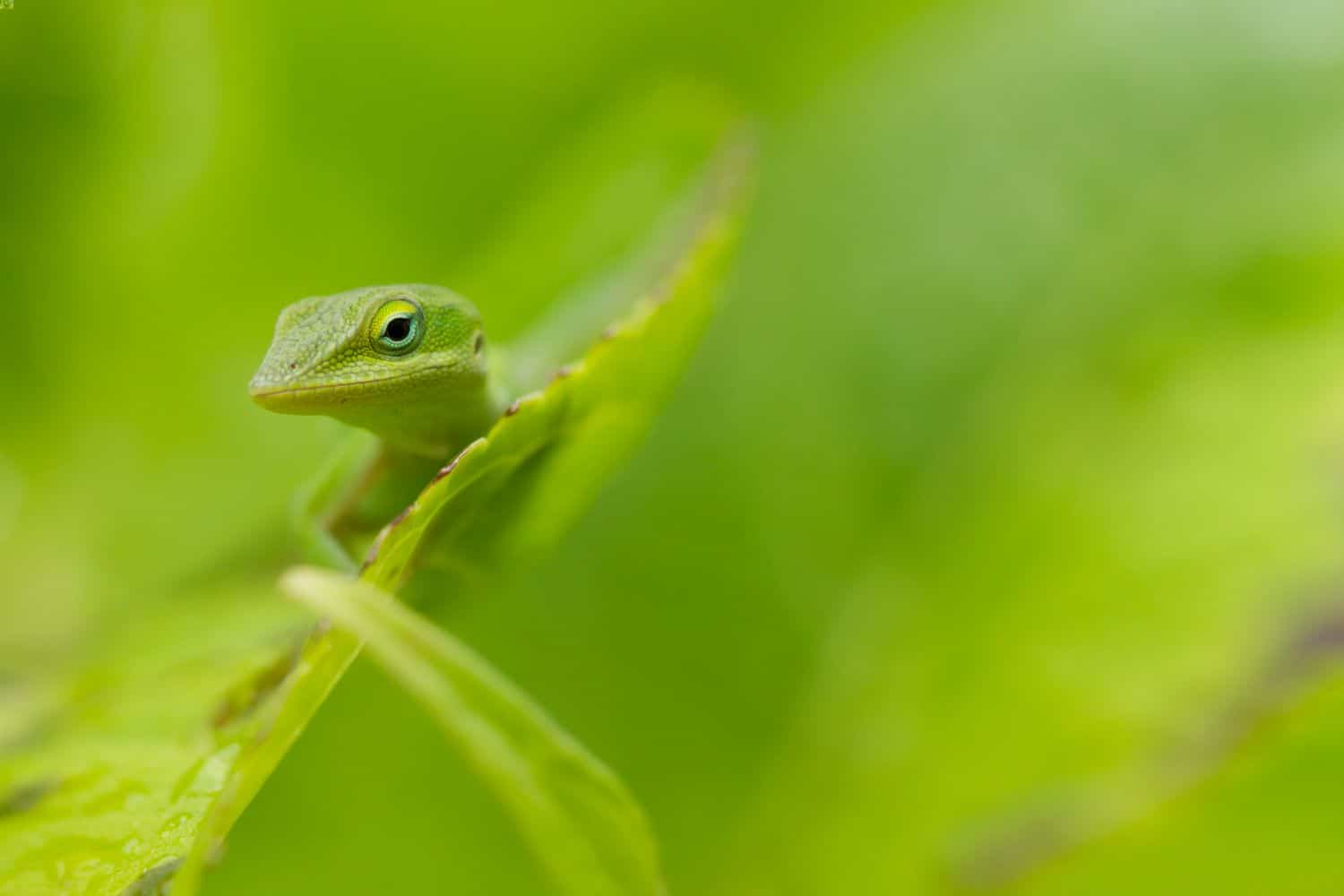
Handling Your Anole Lizard
Anoles are relatively small and fragile, so they should be handled with care. They are not naturally affectionate pets, and too much handling can stress them out. If you do need to handle your Anole, approach it slowly and gently cup it in your hands. Avoid grabbing them by the tail, as they can easily drop it as a defense mechanism—a trait known as autotomy. While the tail will eventually grow back, it’s better to avoid causing this stress.
Common Health Issues in Anoles
Anoles are generally hardy lizards, but they can suffer from several health issues if not properly cared for. One of the most common problems is metabolic bone disease (MBD), which occurs due to a lack of calcium and UVB light. Symptoms include lethargy, swollen limbs, and a noticeable softening of the bones. Regular supplementation and exposure to UVB lighting are the best preventative measures. Dehydration is another concern, especially in low-humidity environments. Signs include wrinkled skin, sunken eyes, and a decrease in activity.
Conclusion
Caring for an Anole lizard can be both rewarding and fascinating. With the right habitat setup, a well-balanced diet, and attentive care, these small reptiles can thrive in captivity. Their vibrant color changes, active personalities, and ease of care make them ideal pets for both beginners and experienced reptile enthusiasts alike.
Anole Lizard FAQs
- What do Anole lizards eat in captivity?
Anoles primarily eat small insects like crickets, mealworms, and waxworms. In captivity, ensure they get a diet rich in protein and calcium. - How can I tell if my Anole lizard is healthy?
A healthy Anole will be active, have bright eyes, and demonstrate a healthy appetite. Its color will also be vibrant when it is in a comfortable environment. - Why is my Anole lizard changing colors?
An Anole changes colors based on temperature, mood, and health. Brown often signifies stress or a need for warmth, while green indicates comfort. - What size tank does an Anole lizard need?
A single Anole needs a vertical terrarium that is at least 20 gallons in size. This allows enough room for climbing and exploring.

